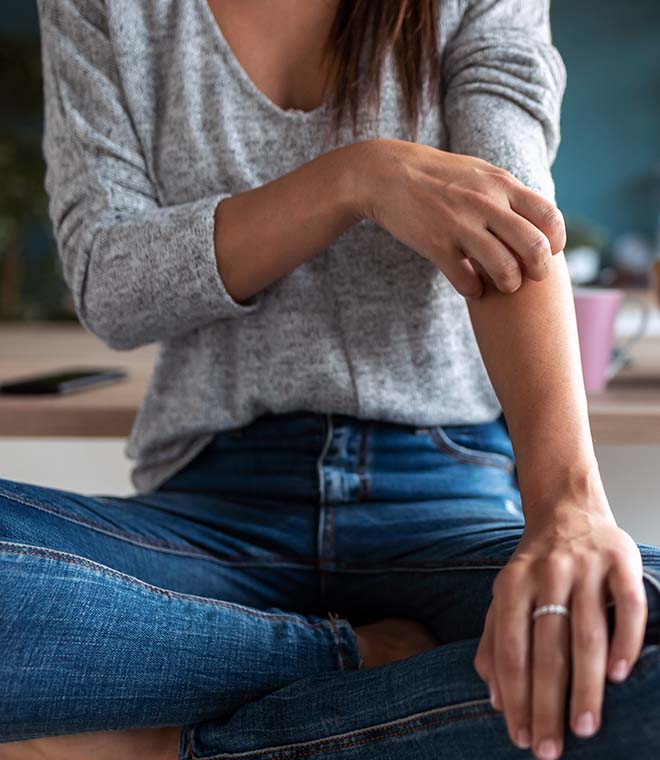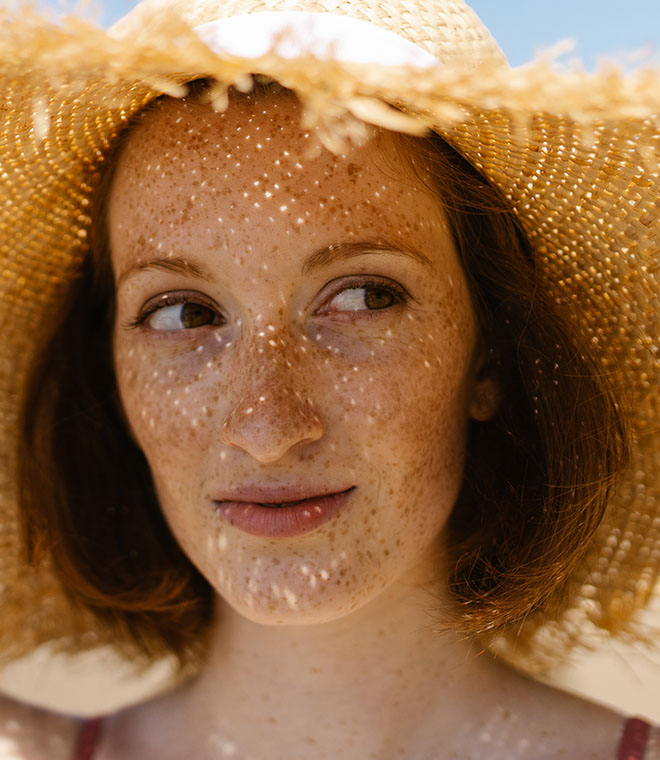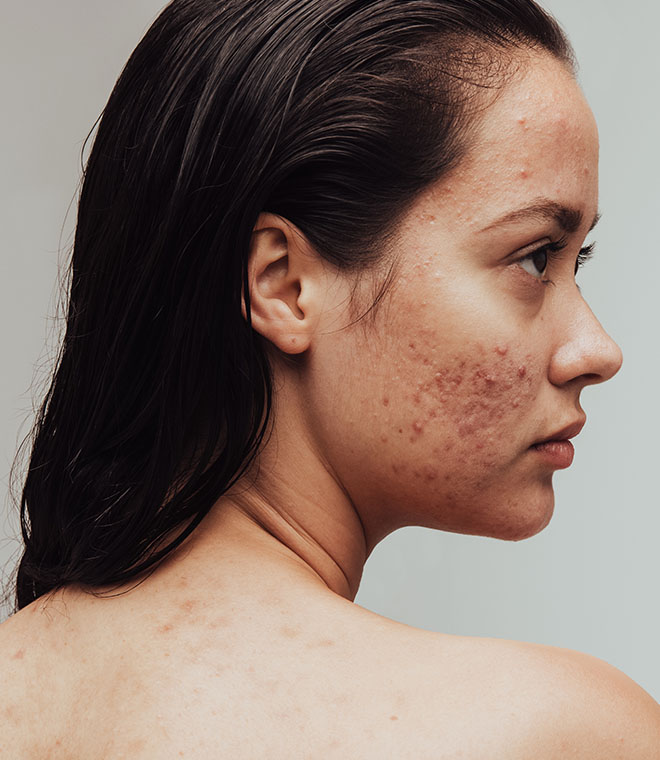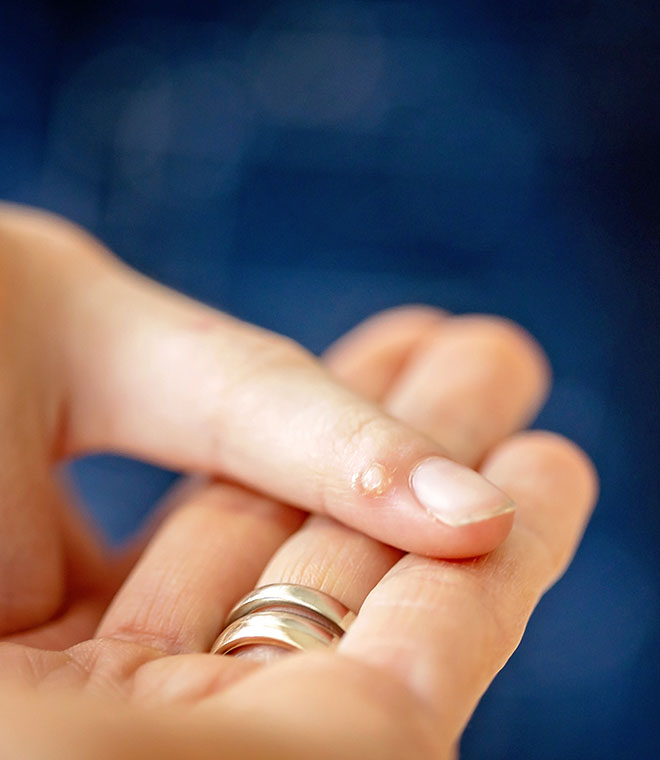Health
Sun spots: Causes, treatment & prevention
By Jenilee Matz, MPH Sep 24, 2021 • 7 min
As you age, small, dark spots may appear on your skin.
Also known as age spots or liver spots, sun spots are common in people over 40 years of age. These spots are caused by sun exposure, and, though they may look alarming, true sun spots are harmless. Learn more about sun spots, including how to treat and prevent them.
Sun spot basics
Sun spots are caused by exposure to ultraviolet (UV) light. Specifically, UV light speeds up how much melanin (the skin's natural pigment) the body produces. Melanin can build up on areas of the skin that have received repeated and intense sun exposure, resulting in darker-looking spots on the skin.
Sun spots are more common with age, but younger people can also develop them, especially if they've spent a lot of time in the sun. For instance, if you have a history of sunburns on your face, the spots may be a sign of sun damage on the face. The following factors seem to increase the risk of sun spots:
- A fair complexion
- A history of getting intense sun exposure or sunburn
- A history of using tanning beds or tanning lamps
Symptoms
Sun spots tend to be slightly larger in size than freckles. They often appear on areas of your skin that have been exposed frequently to the sun, such as the face, including the nose, arms, backs of the hands, shoulders, upper back and tops of the feet. Signs of sun spots include:
- A flat, oval spot that's darker in pigmentation than the rest of your skin
- A spot that's tan, brown or black in color
- A spot of up to one-half inch in size, though some can clump together, which make them look larger
- A spot that's painless
When to see your healthcare provider
While true sun spots aren't harmful, contact your dermatologist (skin care doctor) if you develop any new spots on your skin or if existing spots change in any way. Spots that grow darker or change in appearance can be a sign of melanoma, a serious form of skin cancer. It's especially important to see your doctor if you have any areas of your skin that:
- Are black or dark in color
- Are growing in size
- Have an uneven or irregular border
- Have an unusual color
- Are itching, red, tender or bleeding
Reducing sun spots
Even though sun spots do not require medical treatment, some people dislike their appearance and seek to find ways to minimize them. Treatments can lighten or remove age spots, falling into two categories: topical products and procedures.
Topical products
Skin-lightening creams and lotions are available over the counter and by prescription. Your doctor may recommend you use a prescription bleaching product called hydroquinone, alone or in combination with retinoids and a steroid. These treatments may slowly fade sun spots over time.
Procedures
Several procedures are used to lighten sun spots. Though they may work more quickly than topical products, procedures also may have a higher risk of causing side effects. Be sure to discuss all treatment options with your doctor. Note that you may need more than one round of treatment for best results:
- Laser treatment uses lasers to fade sun spots in one to three treatments.
- Cryotherapy involves freezing cells inside of the age spots. Once your skin heals, the age spot looks lighter.
- Microdermabrasion is a procedure in which a doctor smooths away age spots. (You may have better results if you have microdermabrasion with a chemical peel.)
- For a chemical peel, the doctor applies an acid to the skin to remove its damaged outer layers, including the sun spots. The skin peels, and new skin forms in its place. Chemical peeling may be especially effective on age spots on the hands.
It's unknown if alternative treatments, such as essential oils, are effective for reducing sun spots. Still, applying makeup over age spots can help them look less visible.
Prevention
To prevent sun spots or lower your risk of additional spots, try to reduce how much sun exposure your skin receives. Follow these tips:
- Use a broad-spectrum sunscreen that protects against harmful UVA and UVB rays, with a sun protection factor (SPF) of 30 or higher. Apply sunscreen 15-30 minutes before heading outdoors, and reapply every two hours or more often if you're swimming or sweating heavily.
- Cover up with a hat and clothing. Wear a wide-brimmed hat and clothing that's made out of a tightly woven material to cover your arms and legs.
- Seek shade during midday. The sun's harmful UV rays are strongest between 10 a.m. and 2 p.m. Try to avoid being in the sun between these hours.
Sun spots are common skin changes that occur as a result of prolonged sun exposure. While they're harmless, some people consider them unsightly. Topical products and procedures can help minimize sun spots, but see your doctor before you treat them on your own. What looks like a sun spot may be another skin condition, such as skin cancer, so it's best to get it checked out.
Clinically reviewed and updated September 2021.
Sources:
1. https://www.aad.org/public/skin-hair-nails/anti-aging-skin-care/age-spots
2. https://www.mayoclinic.org/diseases-conditions/age-spots/symptoms-causes/syc-20355859
3. https://www.aad.org/public/diseases/cosmetic-treatments/chemical-peels
4. https://newsnetwork.mayoclinic.org/discussion/mayo-clinic-q-and-a-treating-sunspots/
5. https://medlineplus.gov/ency/article/001141.htm
6. https://www.cancer.org/latest-news/how-to-spot-skin-cancer.html



